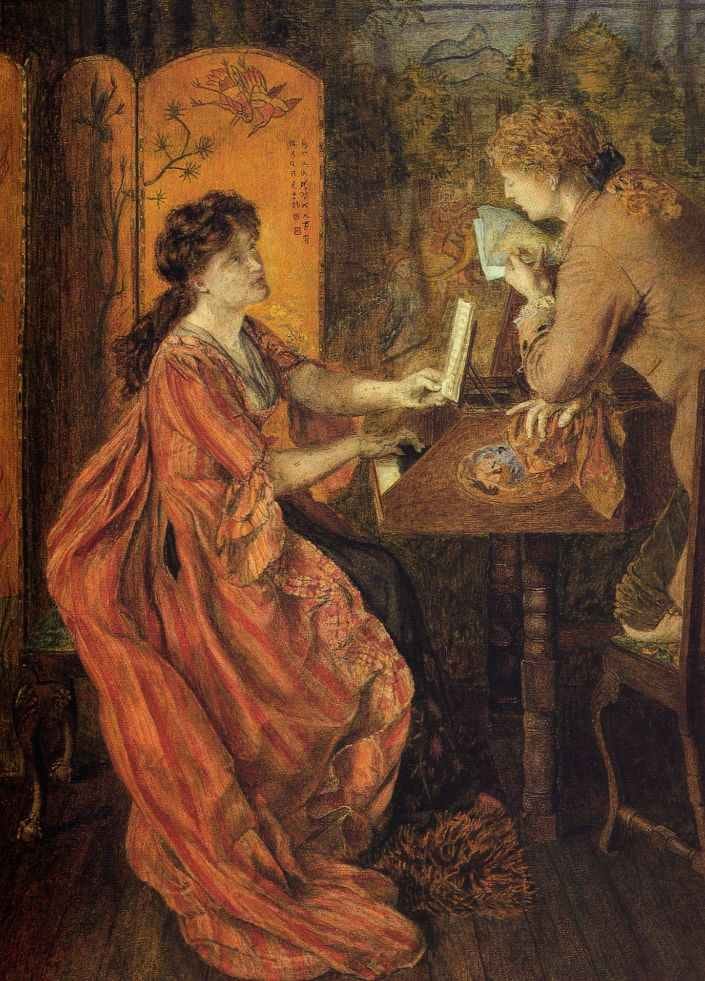Draft players, not archetypes
If Brandon Miller is better than Scoot Henderson, so be it. But in the NBA talent reigns over positional value.
Good morning. Let’s basketball.
The Duet; Lucy Madox Brown; 1870
A tweet from analyst Jeff Goodman struck me as interesting.
Versatile, multi-dimensional forwards are worth more today than point guards who can’t shoot - no matter how athletic they are.
This comment was made in the context of the Scoot Henderson vs. Brandon Miller debate. I’m going to be honest that I’m not deep enough in the prospect analysis game to have a strong opinion on Scoot vs. Miller.
Scoot looks like he’s going to be able to attack the rim against NBA defenses, and he has the agility and, by all accounts, the work ethic to be a good defender. You can definitely imagine this all working very well at the NBA level.
The same applies to Miller: he looks every bit the part of an NBA wing, especially in a league more reliant on quality shooters every year. Long and rangy is the best recipe these days. Miller is long and rangy.
My issue isn’t with analysis or scouting that leads you to believe that Miller is a superior prospect to Scoot, or that they are even and in cases where there is little discernable difference you go with the position of greater value. That’s all fine. My issue is more in drafting by archetype instead of drafting by player.
2019 NBA Draft. After Zion Williamson — a prospect who defied all archetypes — you had Ja Morant (a point guard who couldn’t shoot) and R.J. Barrett (a versatile, multi-dimensional forward). Morant still can’t reliably shoot from deep. Off-court issues notwithstanding, 30 out of 30 NBA teams would take him over the more positionally valuable Barrett. Why? Morant is a better basketball player than Barrett.
It can swing the other way, too: most teams would take Scottie Barnes over some of the non-shooting point guards (or combo guards) in the 2021 NBA Draft. That’s not because of what position Barnes plays in the NBA. It’s not because of his archetype. It’s because Barnes appears to be a more productive, most useful player.
If anything, NBA teams can be a bit too quick to fall in love with the prototypical swingman. The NBA Draft is littered with players who look the part of the archetype wing but then don’t really produce like it. When you get one that really hits — which Miller might — it’s franchise-changing. Think Kawhi Leonard, Paul George, Mikal Bridges. Even Desmond Bane, who doesn’t so much physically look the part but fits the statistical mold. Trey Murphy is an upstart version of this. Jaylen Brown, of course.
But there are plenty of versions of that archetype that simply don’t work out, or work out to a degree but not where similarly rated non-shooting point guards work out. The archetype is a nice guide, a comparison tool. But you don’t draft to fill roles. You draft for talent. You draft for expected future value.
If you think Scoot is better than Miller over the next seven years, you draft Scoot regardless of what the current NBA team-building model says. If you think the odds of each player outproducing the other is even, then stuff like archetype and team fit and leadership qualities come into play.
Keep reading with a 7-day free trial
Subscribe to Good Morning It's Basketball to keep reading this post and get 7 days of free access to the full post archives.



